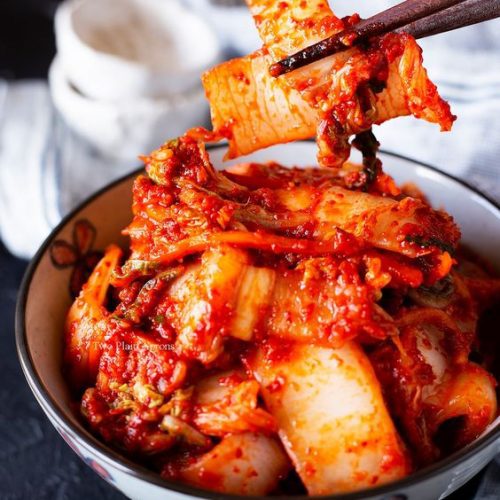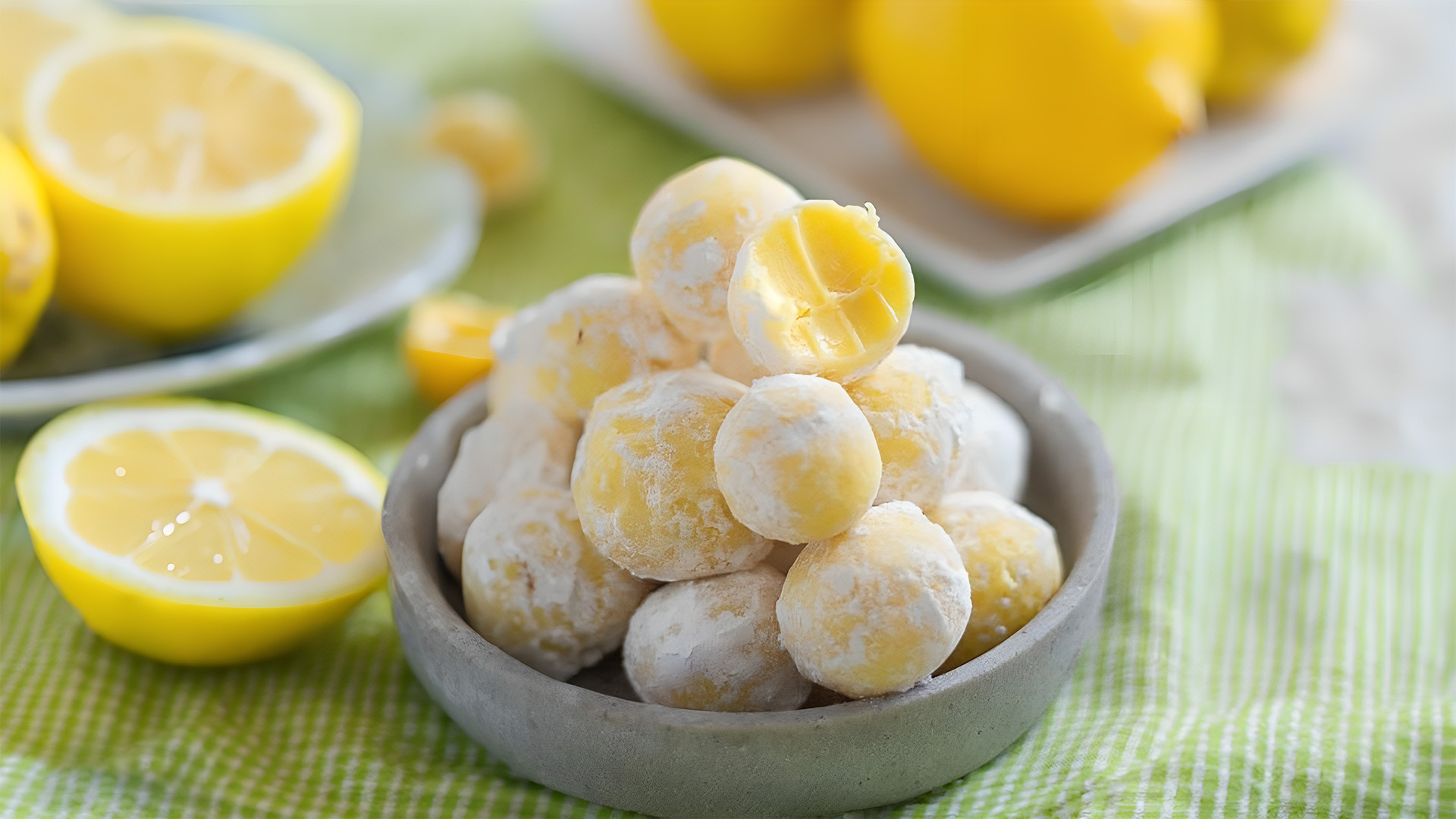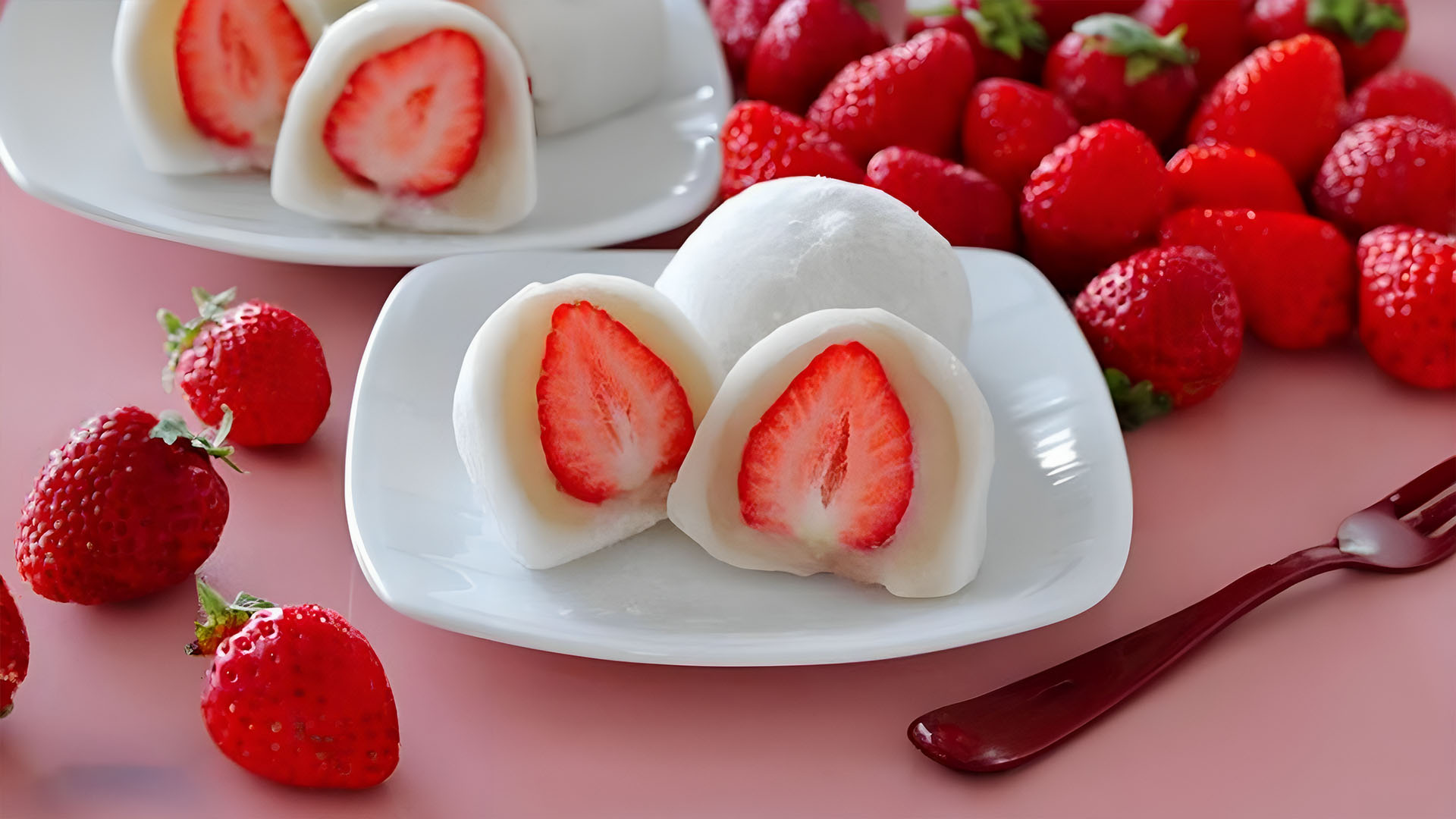Kimchi Recipe – Welcome to the world of kimchi, a traditional Korean cuisine with international renown for its distinct flavors and health advantages. In this detailed guide, we will delve into the rich history of kimchi, reveal its traditional components and preparation methods, debunk the fermentation process, and answer frequently asked questions about its halal status. In addition, we will discuss the unique flavor profile of kimchi and present a step-by-step recipe for making this popular meal at home. Prepare your taste buds for a delectable journey into the world of kimchi.
Kimchi Recipe
The History of Kimchi
Kimchi, a popular Korean delicacy, is more than simply a dish; it represents Korean identity, resilience, and the art of fermenting. Its history demonstrates the Korean people’s skill in storing veggies over the hardest winters and turning it into a global gourmet wonder.
- Kimchi’s History: Kimchi has been around for almost 2,000 years, dating back to ancient Korea. Originally, it was used to preserve vegetables during the severe winter months. Kimchi evolved from a simple preservation method to a Korean culinary staple, praised for its diverse flavors and cultural importance.
- Kimchi has been inextricably linked with Korean culture and aristocracy. It was a common sight on the tables of Korean monarchs and was utilized in a variety of rites and rituals.
- Modern Evolution: Chili peppers were brought to Korea in the 18th century, resulting in the development of the spicy kimchi variations that are now famous worldwide. Kimchi is still an important element of Korean culture today, with numerous regional varieties.
Kimchi’s history is one of invention and tradition, adaptability and preservation. Kimchi reflects the soul of Korean cuisine and the art of transforming humble ingredients into something truly spectacular, from its humble beginnings as a simple pickled vegetable to its current status as a global culinary sensation.
What Is Traditional Kimchi Made Of?
Kimchi is a culinary marvel noted for its vivid flavors and nutritional value. While there are numerous variations around Korea, there are some key elements that distinguish this popular dish:
- Napa Cabbage: This is the most popular kimchi foundation. Before being blended with seasonings, the cabbage is cut into pieces, salted, and rinsed.
- Korean Radishes: Another popular basis, Korean radishes are frequently used to make variants such as “kkakdugi,” a cubed radish kimchi.
- Ingredients: The main ingredients are garlic, ginger, fish sauce (or a vegan equivalent), sugar, salt, and Korean red pepper flakes (gochugaru).
- Other vegetables, including as green onions, carrots, and scallions, may be added for flavor and texture depending on the type of kimchi.
These components are frequently combined in traditional kimchi recipes. The precise amounts and variances in components can differ depending on geography and personal preference. The art of creating kimchi is to achieve the exact balance of these components in order to create a harmonic burst of flavors and textures.
How Long Does It Take for Kimchi to Ferment?
Kimchi fermentation duration varies dependent on temperature, desired level of fermentation, and personal flavor preferences. Fermentation can take anywhere from a few days to many weeks in most cases. Here’s a general rule of thumb:
- Fermentation at Room Temperature (speedier): If you want a speedier fermentation process and want to taste your kimchi as soon as possible, leave it at room temperature for 1 to 2 days. During this period, bubbles may emerge and the kimchi will become slightly sour.
- Refrigerator Fermentation (Slower): Refrigerate the kimchi for a slower fermentation that produces richer, more nuanced flavors. The fermentation process will be greatly slowed as a result. Refrigerated kimchi can continue to develop and improve in flavor for several weeks to months. Kimchi fans frequently eat it after a week or more in the refrigerator.
Keep in mind that the temperature of your environment can affect the rate of fermentation. Warmer temperatures hasten the process, whereas cooler temperatures hasten it. Regularly taste your kimchi to determine whether it has reached the desired level of fermentation. As the kimchi ferments, it becomes more tangy and sour, and the tastes get more complex. Move it to the refrigerator once it has reached the appropriate taste to terminate the fermentation process.
Is Kimchi Halal?
The halal status of kimchi is determined by the components utilized. Traditional kimchi frequently contains non-halal ingredients such as fish sauce or shrimp paste. However, halal-friendly kimchi can be made by replacing these ingredients with substitutes such as miso paste or soy sauce.
- Many key kimchi ingredients, such as napa cabbage, garlic, ginger, and Korean red pepper flakes, are plant-based and therefore halal.
- Traditional kimchi recipes frequently incorporate fish sauce or fermented shrimp paste, which may not be halal. There are vegan options.
- Vinegar and sugar: Common kimchi ingredients such as vinegar and sugar are halal.
- Cross-Contamination: To maintain halal status, kimchi must be prepared in a halal-certified or specialized kitchen.
- Kimchi Made Commercially: When purchasing commercial kimchi, look for halal certification or question about the ingredients and preparation techniques.
Consider preparing kimchi with halal-certified products or vegan replacements for non-halal components for strict halal compliance. This allows for more control over ingredients and ensures that dietary preferences are met.
The Flavor of Kimchi
Kimchi’s flavor profile is a complex and harmonious blend of different tastes and textures, making it a popular and famous dish in Korean cuisine. Here’s a breakdown of the essential ingredients that contribute to kimchi’s bright flavor:
- Spiciness: Korean red pepper flakes, or gochugaru, add a noticeable spiciness to kimchi, with the amount used determining the level of heat.
- Tanginess: Kimchi’s tartness and subtle sourness are caused by fermentation, as lactic acid bacteria grow during the process.
- Kimchi has a deep umami flavor obtained from ingredients such as garlic, ginger, and, occasionally, fish sauce or fermented shrimp paste (saewoojeot).
- Saltiness: Salting the cabbage first adds a balanced saltiness to the kimchi, which aids in both flavor and preservation.
- Freshness: Green onions, radish, and carrot add freshness and a nice crunch to the overall texture.
- Aromatic Notes: Freshly grated ginger and minced garlic lend aromatic richness to the flavor of kimchi.
- Complexity Develops Over Time: The flavor of kimchi evolves and deepens during fermentation, with tangy and sour notes becoming more prominent as it ages.
- Kimchi’s adjustable flavor profile makes it an excellent addition in a variety of Korean recipes.
The combination of these ingredients results in a delightful and distinct flavor that varies from batch to batch, making kimchi an iconic and cherished dish in Korean cuisine.
Kimchi Recipe
Now, let’s roll up our sleeves and dive into the world of kimchi-making. Here’s a step-by-step recipe to create your own delicious kimchi at home.

Kimchi Recipe
Equipment
- Mixing Bowl
- gloves for handling spicy ingredients
- airtight container for fermentation
Ingredients
- Napa cabbage or Korean radishes
- Salt
- Garlic
- Ginger
- Fish sauce (or a halal-friendly substitute)
- Sugar
- Korean red pepper flakes (gochugaru)
- Additional vegetables (optional)
Instructions
Preparing the Cabbage:
- Cut the napa cabbage lengthwise into halves, then into quarters. Take out the core.
- Cut the cabbage into 2 inch wide bite-sized pieces.
- To make a brine, dissolve 1/4 cup salt in 4 cups water in a large mixing bowl.
- Immerse the cabbage in the brine. To keep the cabbage immersed, place a heavy plate on top. Allow it to soak for 1 to 2 hours, tossing every now and then to achieve even salting.
Rinsing and Draining:
- After brining, thoroughly rinse the cabbage under cold running water to eliminate excess salt.
- Drain the cabbage for 15-20 minutes in a colander, allowing excess water to run out.
Creating the Kimchi Paste and Mixing the Kimchi
- Combine the grated ginger, minced garlic, sugar, fish sauce, and Korean red pepper flakes in a mixing bowl (adjust for desired spiciness).
- Mix the ingredients well to form a paste.
- Combine the drained cabbage, chopped green onions, julienned radish (if using), and julienned carrot (if using) in a large mixing bowl.
- Spread the kimchi paste evenly over the cabbage mixture while wearing cooking gloves.
- Massage the paste into the vegetables until well coated. To avoid injuring the cabbage, be thorough yet careful.
Fermentation
- Place the kimchi in clean, sealed containers, pressing hard to minimize air spaces.
- Leave some room at the top of each container to allow for kimchi expansion during fermentation.
- Tightly seal the containers.
- Allow the kimchi to ferment at room temperature for 1-2 days, depending on the level of fermentation you desire. Every day, taste it.
- Once fermentation has reached the proper level, place the containers in the refrigerator. The fermentation process will be slowed as a result.
- Homemade kimchi tastes best after it has fermented in the refrigerator for about a week. If you can't wait, you can eat it right away!
Conclusion
We’ve completed our kimchi-making journey by embracing the core of Korean food. Kimchi is more than just a side dish; it’s an art form. We’ve produced a symphony of tastes with careful preparation and diligent fermentation—spiciness, tanginess, umami, and aromatic notes of garlic and ginger.
But the appeal of handmade kimchi doesn’t end there. Its complexity develops as it matures in the refrigerator, developing into a more sophisticated version of itself. This culinary jewel is more than just a condiment; it’s a versatile ingredient that improves everything from stir-fries to stews.
Homemade kimchi reflects culture, tradition, and the bond that people have with their culinary roots. It is a means of expressing Korean warmth and welcome.
So, as you relish your creation, take time to appreciate the process, from selecting fresh ingredients through painstaking preparation and the patient wait for fermentation. It’s a trip that connects you to the richness of Korean cuisine while also bringing people together through a shared appreciation of delicious food. 맛있게 드세요 (mashitge deuseyo)! Enjoy your handmade kimchi to the utmost!











Leave a Reply